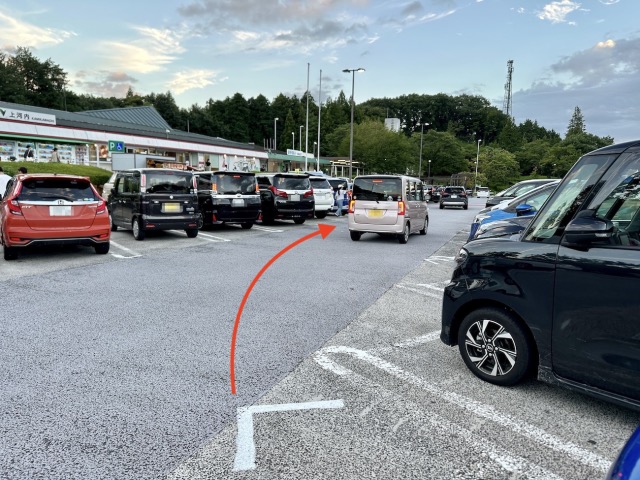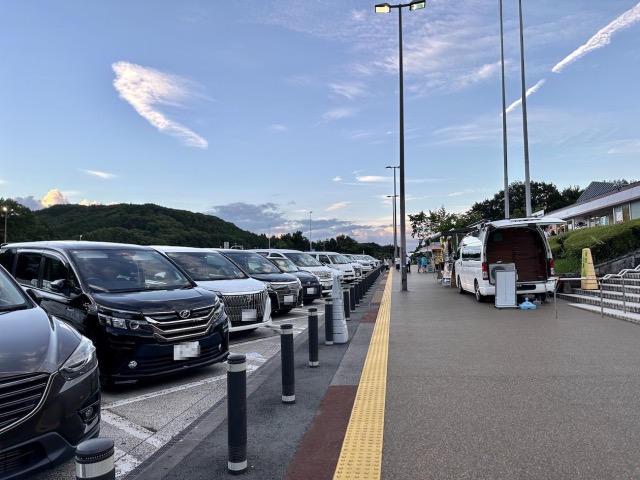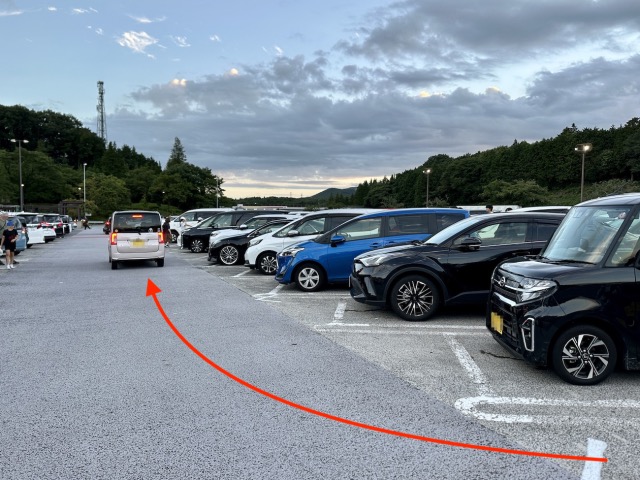
Clever design is a literal lifesaver.
If you’ve ever driven on a highway in Japan, you may have noticed that when drivers stop for breaks at the parking areas (PA) and service areas (SA), they have to park in angled spaces.
Angled parking like this is quite rare outside of these rest stops, so…why does it exist?
It’s a question that’s often puzzled our reporter Masanuki Sunakoma, but recently a friend cleared up the mystery for him, and now that he knows the reason behind the angled parking, he’s keen to share it with the world.

Apparently, the reason why a lot of highway rest areas use angled parking is to prevent drivers from driving in the wrong direction.
The angle of the parking spaces always faces the rest area exit, giving drivers only one choice of direction when they pull out of the parking space. While the direction of the exit might seem obvious to a lot of drivers, the angled parking is a failsafe way to ensure nobody makes the mistake of going back to the entrance instead. If even one car mistook the entrance for the exit, it could cause a head-on collision with cars entering the rest area, or, in an even worse scenario, they could make it out on to the highway again, only to drive straight into oncoming traffic.
With thousands upon thousands of cars and people on Japan’s highways every day, even one foolish mistake could have catastrophic results. So the angled parking is a literal lifesaver.
▼ Always only one way to go when you drive out of an angled space.

This revelation blew Masanuki’s mind, so he did a little more research, where he was able to confirm that the angled parking is utilised to prevent accidents. He also discovered some other benefits, as the design makes it easier for cars to enter and exit, and it helps to maximise the number of spaces in the parking lot.

If you’ve ever driven in or out of an angled spot, you’ll know how pleasant it can be — there’s no need to constantly check your mirrors and turn the steering wheel back and forth to straighten up like you would in a straight space, and the vehicle just seems to slide in and out with minimal effort, making it a relatively stress-free experience. It’s also a lot faster than getting in and out of a straight space, which helps to prevent congestion.
▼ Whee! See ya later!

The angle also helps to shorten the length between the front and rear ends, essentially creating more parking spaces while allowing both the vehicular and pedestrian thoroughfares in between to remain wide and easily accessible.
▼ Making the best use of limited space is something Japan excels in.

Utilising the area effectively also helps to ensure there are enough large spaces for vehicles like buses as well.

So there you have it — the reasons why Japanese highway rest stops have angled parking is to prevent accidents, stop congestion, make parking easier, and to fit more cars in, even in the busiest peak holiday periods.
It’s yet another example of world-class design that a lot of us in Japan take for granted every day. However, now that we know more about it, we have an even greater appreciation for Japanese highway rest stops…and their toilets that can measure fatigue levels.
Photos ©SoraNews24
● Want to hear about SoraNews24’s latest articles as soon as they’re published? Follow us on Facebook and Twitter!

No hay comentarios:
Publicar un comentario